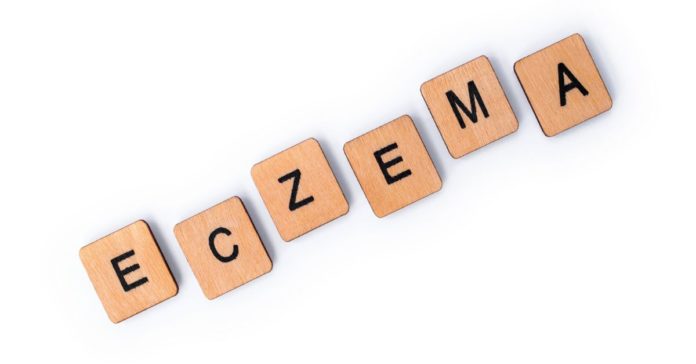What is Venous Stasis Dermatitis?
Venous stasis dermatitis, otherwise called Venous eczema or stasis dermatitis, is a condition when the veins, especially in the lower legs, block the blood from flowing freely. Some blood leaks out of the veins and into the skin when the liquids and pressure build up.
People over the age of 50 are more likely to get venous stasis dermatitis as there may be weakness happening in the veins and it is also found that women are more commonly affected by this condition than men.
The problem can be pacified with the help of many medical therapies and home remedies for eczema as well.
What are the Symptoms?
The first symptom that can be noticed is swelling around the ankles. It can seem better when sleeping and might again become severe during the day time.
When the person stands or walks, the legs might feel sluggish and the person might find it difficult to move.
Some of the signs and symptoms seen are:
- Skin turning reddish, brownish or yellowish in color around the ankles
- Varicose veins, that appear to be bulging, twisted and dark blue or purple in color
- Sore formation, that itches, oozes, crusts, or becomes scaly
- Skin around the ankles and shins becomes thick
- Ankle and shin hair loss
- Severe pain or discomfort
What are the causes?
People with circulatory issues are often affected by this condition. The heart doesn’t get sufficient blood for its function if the veins are not functioning properly. The veins in the legs push the blood up from the legs with the help of one-way valves. When people get older, they tend to face many health problems including the valves getting weaker, resulting in venous insufficiency, which in turn causes venous dermatitis, as the skin does not get enough blood and oxygen it is supposed to receive.
Also Read: What is The Normal Oxygen Level in Human Body
Some of the causes of venous stasis dermatitis are:
- Obesity / excess body weight
- Hypertension
- Heart ailments like congestive heart failure
- Renal issues/kidney failure
- Varicose veins
- Blood clot in the legs
- Pregnancy and postpartum health complications
- History of surgeries and previous records of medical conditions especially in the legs
People who usually sit or stand for a long period of time or follow a sedentary lifestyle, are also more likely to experience this condition.
What are the treatment options?
The best way to treat venous eczema is to prevent the condition from arising in the first place.
There are also a number of treatment options available to pacify the condition, however, the doctors suggest home remedies as the first level of treatment. If the symptoms get worse, surgery to repair the veins may be advised, as circulation is the main cause of the condition.
Some of the ways to have a proper circulation in the legs are:
- Avoiding a sedentary position or standing for too long – walking around often will help to improve the circulation.
- Elevating the feet over the heart once in 2 hours for 15 mins will help with a better circulatory system. This can be done while sleeping also.
- Wearing compression stockings help to relieve many venous issues by easing off the swelling and improving the blood circulation.
The patient would be initially given corticosteroids to help with the pain, redness and swelling. These need to be applied on the ankles and legs. If the patient has itchy and scaly sores, an antihistamine formulation, either in the form of pills or creams, would help to heal the soreness. While it heals, the wounded area has to be covered with medicated dressing and the patient might be advised to take antibiotic pills if there is any infection or fever develops.
Dryness in the skin can be cured with the help of moisturizers (preferably petroleum jelly or thick creams) that do not have any fragrance, dyes or perfumes in order to avoid any allergy or irritation developing further on the affected spot.
How can venous eczema be prevented?
Although venous eczema cannot be entirely prevented, following a few remedies and measures as given below can help the patients to get rid of the discomfortness and sores.
- Changing lifestyle patterns – to keep the condition under control, it is necessary to change the everyday routine and follow some hygienic and healthy habits. Following a balanced diet is also essential
- Exercising – doing exercises is a must to help with the proper circulatory system. It is vital to take advice from the doctor before going about starting exercises to treat the condition.
- Moving or walking around – people’s job might require them to sit or stand for a long time, however, making sure that walking or moving around for about 10-15 mins once in an hour, helps to improve the blood flow in the legs.
- Wearing safe and comfortable fabrics – Choosing to wear compression stockings is a good option and wearing loose and cotton fabrics for the rest of the body helps with the healing of the wounds. Opting out tight and rough fabrics is necessary as they might irritate the skin and cut down the circulation.
- Maintaining the skin – people with eczema and sensitive skin can have severe effects. It is vital to take care of the skin by only using subtle and soft products on the skin. Using mild soaps or non-soapy cleansers to clean the body would help prevent any infection developing in the affected spot. After bathing, wiping off gently with a soft fabric towel followed by applying chemical free moisturizer that protects the skin from irritation, dryness and itching is necessary to help with quicker healing.


















